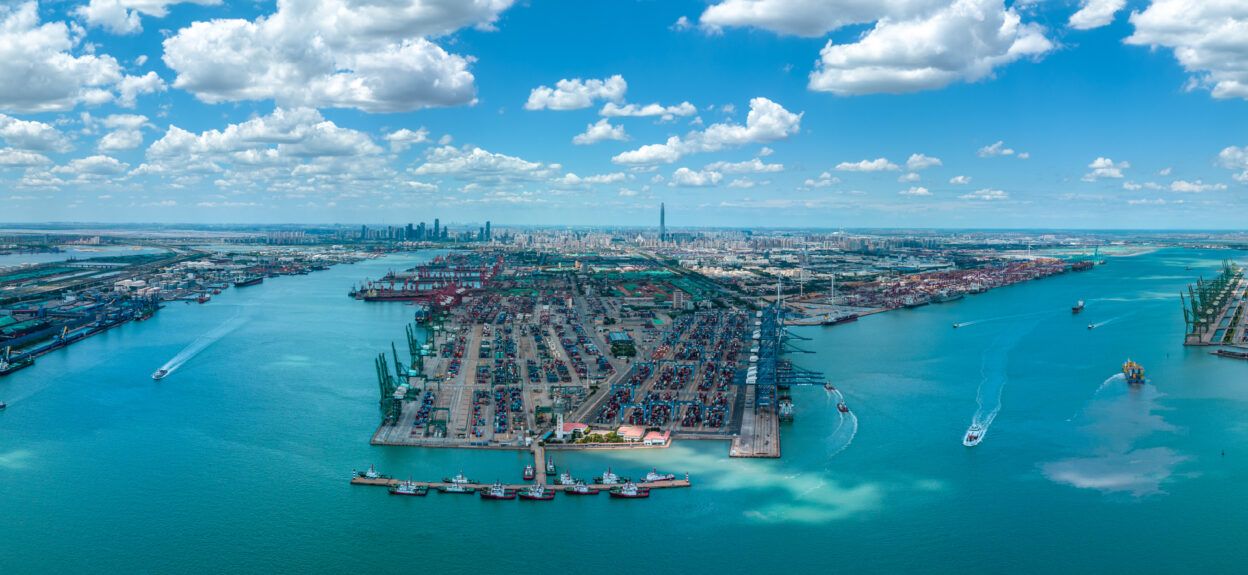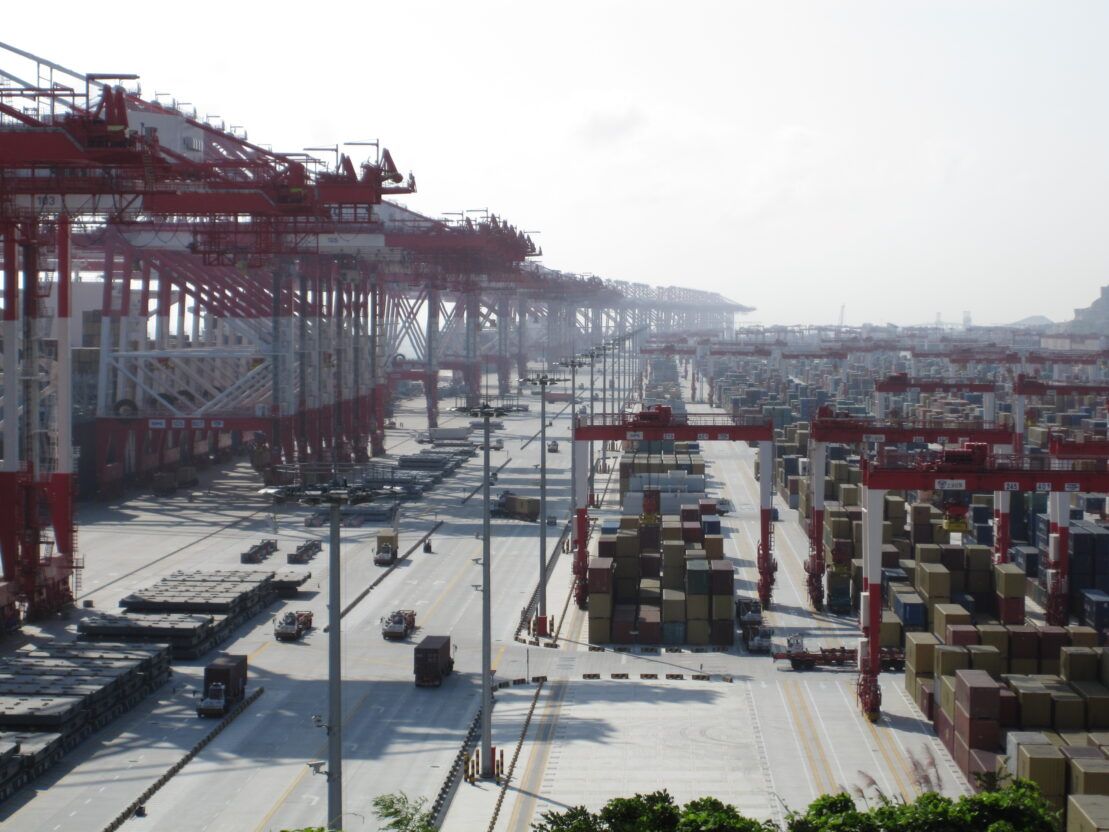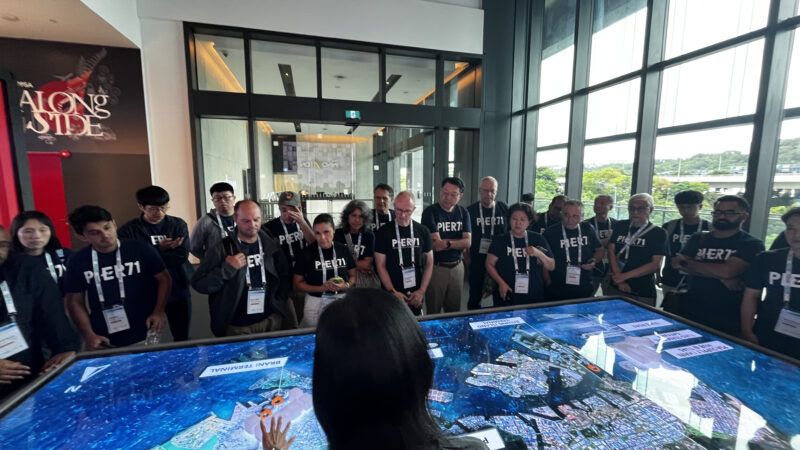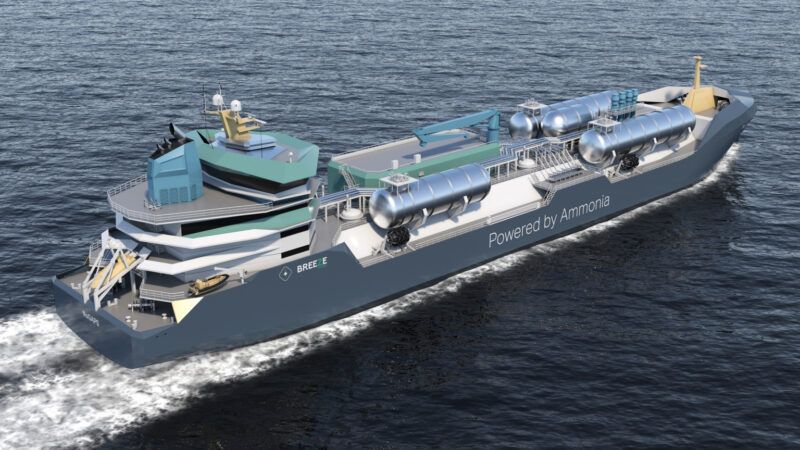
Digital Twins, the Cornerstone of China’s Port Strategy
By air, land, and also by sea. The technological commitment of Chinese ports is generating returns at a commercial and efficiency level, demonstrated by ports such as Tianjin, Qingdao, and Shanghai and their implementation of digital twins that automate and increase operational efficiency at various levels. We analyze China's commitment to the 'digital twin'.

The rapid development of automated port infrastructure in China has transformed global maritime trade and logistics. With 60 fully automated container terminals already in operation and more under construction, the country's commitment to smart technologies translates into numbers that reflect its maritime leadership on several fronts:
- According to Alphaliner, the country's ten most important ports accounted for 54% of total traffic at the world's 30 largest ports through June of this year, with a total of 128.6 million TEUs.
- In 2024, China surpassed 330 million TEU and 17.6 billion tons of cargo at its ports, maintaining its position at the global forefront.
Thus, the ports of Shanghai, Ningbo-Zhoushan, and Qingdao have evolved from traditional logistics centers to become intelligent ecosystems. To make this leap, they have incorporated digital twins into various daily operations. How, exactly, does this technology support this leadership?
"Ports occupy a central place in China's national digitalization strategy. The country is home to some of the world's most active and technologically advanced ports, making them ideal testing grounds for digital innovation," analyzes Dr. Xiao Zhe, scientist at the A*STAR Institute of High Performance Computing in Singapore, for PierNext.
Chinese ports already using digital twins
The implementation of digital twins in Chinese ports is not an isolated pilot project, but a consolidated strategy with measurable results. Three ports stand out for their level of technological maturity and the operational benefits they have achieved through this digital transformation: Tianjin, a benchmark in sustainability and automation; Qingdao, a pioneer in three-dimensional monitoring; and Shanghai, a leader in blockchain and big data integration. These cases demonstrate how digital twins adapt to different port operational models.
Tianjin
In October 2021, Section C of the Port of Tianjin began operations, an automated and sustainable terminal managed through technologies that combine digital twin, 5G, Internet of Things (IoT), autonomous vehicles, and cloud computing designed with Huawei Technologies.
The next step in this collaboration is cooperation between both parties to transfer the complete facilities to the digital twin. Currently, the digital platform for the port, under the Jin Hong operating system, already allows real-time monitoring of machinery, environment, and security at the port.
To date, according to Huawei reports, these are the results:
- The port needs 60% less personnel.
- Drivers now operate trucks remotely and don't have to face dangerous working conditions.
- The solution reduces overall costs by approximately 30%.
- Additionally, the port produces its own renewable energy, which it supplements with other traditional energy sources, and consumes 17% less energy overall.
"The value of digital twins lies in how they connect data and operations, and in their contribution to the decision-making process. They help ports like Tianjin achieve intelligent, automated, low-carbon logistics operations in line with global trends in smart port transformation," says Ke Wang, research scientist at the Institute of High Performance Computing, A*STAR Singapore.

Qingdao
Another prominent port is Qingdao. The research article ' ‘A digital twin framework for large comprehensive ports and a case study of Qingdao Port’ explains that its digital twin structure has the following layers: physical and virtual resources, data connection, "twin data," and application service layer.
This structure enables three-dimensional monitoring and control of port operations in real time, as well as supervising, simulating, and optimizing operations, better allocating resources or automatic vehicle routes.
Other improvements include Ark TaaS (Trade as a Service), an intelligent port service model launched in beta version in early 2025 that uses big data and large-scale models to create six basic application scenarios for maritime trade, with the aim of improving the efficiency of shipowners, cargo owners, and freight forwarders through intelligent services such as route planning and delivery optimization.
"Qingdao aims to achieve smoother coordination between terminals, improve cargo visibility, and reduce downtime, which will contribute to more sustainable and competitive port operations," summarizes Ke Wang.

Shanghai
The technical article 'Real-Time Monitoring and Optimal Resource Allocation for Automated Container Terminals: A Digital Twin Application at the Yangshan Port' analyzes the case of the Phase IV automated container terminal (ACT4) at the Port of Shanghai, whose digital twin consists of three layers: modeling (modeling algorithms, dock planning, cranes, 3D visualization), data (where data from equipment control systems, sensors, IoT are integrated), and representation/rendering (visual interface, control panel, process tracking).
The port also combines the digital twin with blockchain technology for maritime and logistics management of the port, containers, trucks, or ships. And, in combination with big data and AI, it conducts simulations of possible cargo hazards and emergency responses.
In September of this year, the port reached a monthly milestone: it registered more than 710,000 TEU thanks, in part, to its intelligent operation platform, updated through digital twin and big data technology.
The role of digital twins in China's logistics strategy
- The current leadership of the country's ports is due, in part, to collaborations with national technology giants such as Huawei, ZPMC, and Alibaba Cloud, which allows ports to test cutting-edge systems of various technologies.
- "The development of digital twins is closely related to China's overall push toward intelligent infrastructure and logistics. In fact, there are major technology companies headquartered in this country that promote digitalization initiatives. A notable example is the collaboration between Tianjin Port Group and Huawei, which illustrates how the integration of advanced ICT solutions in port operations can lead to transformative results," notes Ke Wang.
- China's port development strategy does not operate in isolation. It is deeply intertwined with the country's enormous investment in road and rail infrastructure that also extends beyond its borders with the Belt and Road Initiative.
- According to the CSIS 2023-2024 database of China's global port projects, the country has invested more than 70 billion dollars in port construction abroad since 2013 that are part of China's Maritime Silk Road, covering 95 port projects in 53 countries.
- "Digital twins enable integration between shipping line systems, land transport, and customs services, ensuring that data flows smoothly throughout the entire logistics chain. This level of digital coordination reinforces China's position as a key hub in the Belt and Road Initiative maritime network, improving not only port operations but also end-to-end trade visibility for international partners," notes Dr. Xiao Zhe.
- The two interviewed experts point out that given the enormous volume of containers handled by the country's ports, digitalization has become essential to maintain efficiency and competitiveness. "While digital twin technology offers significant advantages, it is not the only solution. In many cases, artificial intelligence models and automated systems can offer similar benefits more efficiently," reflects Dr. Xiao Zhe. For Ke Wang, the interesting thing is to talk about a set of complementary tools rather than isolated systems which, in the end, is what guarantees scalability and continuous performance improvement across its entire maritime network.
Why only China and a few others?
Beyond the ports of that country, the global maturity level of digital twins is reduced to a handful of ports, including:
- Port of Antwerp and its APICA digital twin
- Port of Singapore, which launched its Maritime Digital Twin (MDT) in March 2025.
- Port of Hamburg, which has several projects such as DigiTank.
One of the main reasons why we still don't see widespread implementation of digital twins is that their development and maintenance are complex and costly..
- "Creating a virtual replica of a physical port requires large-scale data integration, involving networks of devices that continuously collect real-time information about equipment, traffic, and environmental conditions. For large and dynamic environments like ports, this level of data coordination represents a major technical challenge," assesses Chiara Saragani, CENIT researcher and doctoral candidate in digitalization at the Port of Barcelona.
Commonly, many ports still lack unified data standards and interoperable platforms, creating "data silos" between operators and logistics partners. Without standardized data governance, real-time synchronization between digital and physical systems remains difficult.
Another important barrier is infrastructure and connectivity. Digital twins depend on reliable, high-speed communication networks to process and synchronize massive data flows. Not all ports, especially smaller or less modernized ones, have the necessary connectivity infrastructure to support these types of systems," she continues.
This problem is especially severe in developing regions, but even in advanced economies, concerns about cybersecurity and data sharing between public and private stakeholders further slow integration.
- Saragani also points out that creating and operating a digital twin requires multidisciplinary knowledge, combining expertise in data engineering, simulation, artificial intelligence, and maritime operations. Therefore, hiring or training teams with these skills can be difficult and costly.
Finally, she explains that return on investment is not immediate. "For many ports, especially those operating on tight budgets, the long-term benefits of efficiency and automation must compete with the short-term costs of implementation."
For these reasons, although digital twins have enormous potential, their adoption remains limited to large innovation-driven ports that have the resources and digital maturity necessary to support them.






